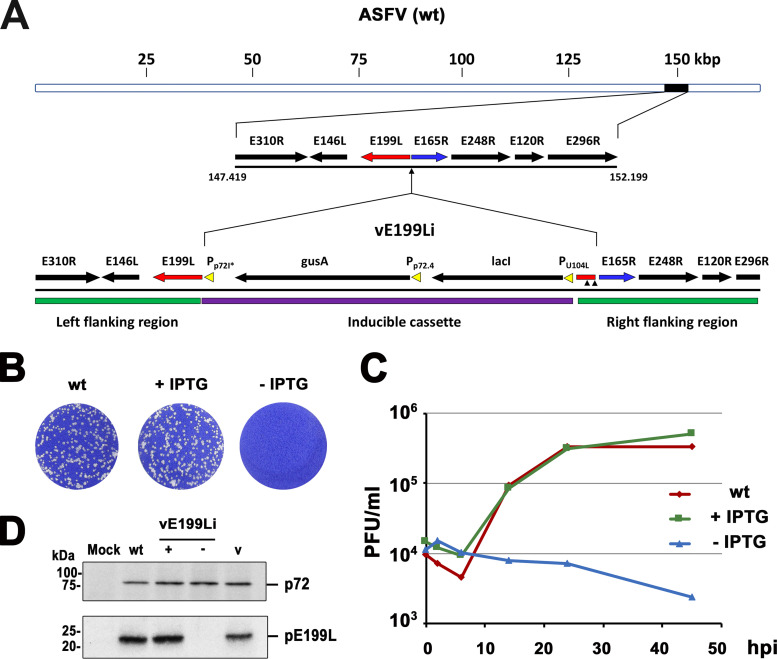FIG 2.
Conditional lethal phenotype of an ASFV recombinant with an inducible E199L gene copy. (A) Genomic structure of recombinant vE199Li. The inducible virus was obtained by homologous recombination of the parental ASFV genome (wt) with an inducible cassette containing a late, IPTG-dependent strong promoter (p72I*) for the E199L gene; a copy of the E. coli lac repressor gene (lacI); and a reporter gene (gusA) used for selection and purification of the recombinant virus. ASFV genes present at the left and right flanking regions are indicated. Two small vertical arrowheads indicate two point mutations introduced to remove start codons in the short sequence of E199L that had been duplicated in the right flanking region. (B) Plaque phenotype of vE199Li. Vero cell monolayers were infected with parental BA71V (wt) or recombinant vE199Li viruses in the presence (+) or absence (−) of 1 mM IPTG. Lysis plaques were visualized by crystal violet staining 5 days after infection. (C) One-step growth curves of vE199Li virus. Vero cells were infected with 5 PFU of vE199Li virus per cell in the presence or absence of IPTG. At the indicated times of infection, the virus titer of each sample was determined by plaque assay on Vero cells in the presence of the inducer. Parental BA71V (wt) infections were also titrated as a control. (D) Inducible expression of protein pE199L. Vero cells were either mock infected (mock) or infected with parental BA71V (wt) or recombinant vE199Li viruses in the presence (+) or absence (−) of IPTG. At 18 hpi, the cells were lysed and analyzed, along with purified ASFV particles (v), by immunoblotting performed with antibodies against viral proteins pE199L and p72 (loading control). The positions of the detected proteins are indicated on the right. Molecular masses are indicated on the left (in kilodaltons).

